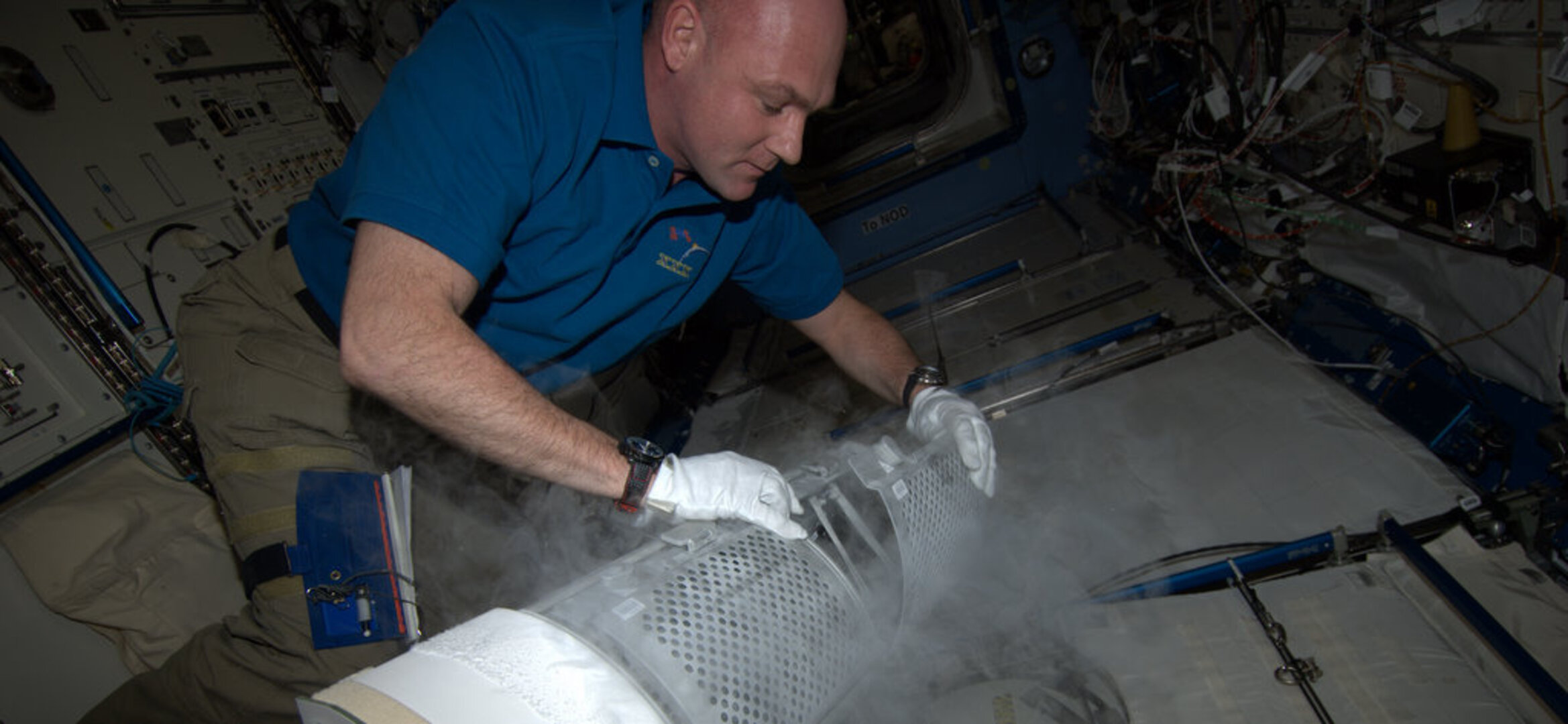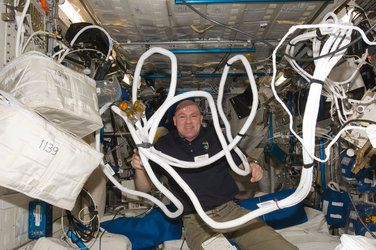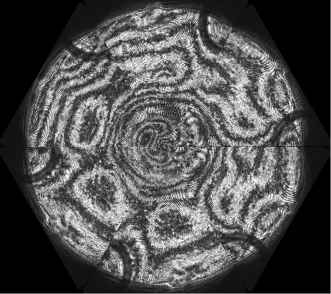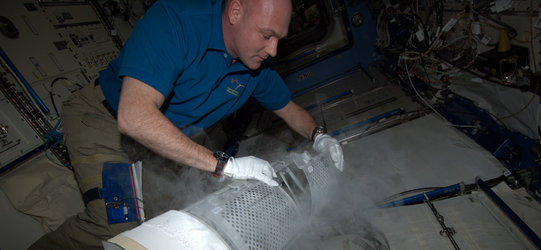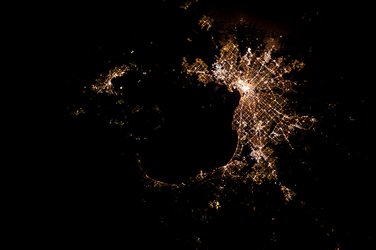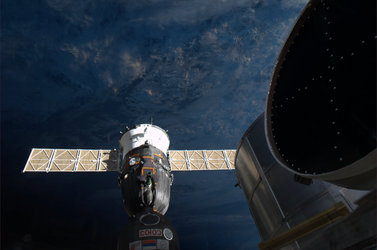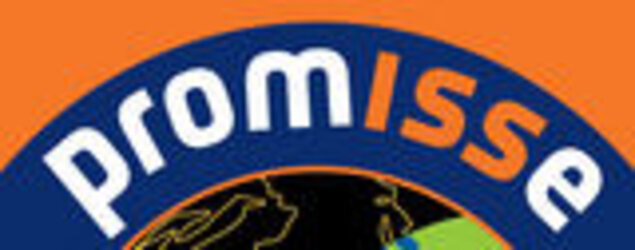Science aboard
The International Space Station is a permanent research platform where the gravitational effects are minimal as a result of its free-falling condition. Conducting research in such a microgravity environment gives researchers a unique opportunity to study the true nature of biological, physiological and physical processes.
André made use of the scientific facilities on the ISS, and especially in the Columbus laboratory. This European module provides scientists with a unique laboratory to conduct world-class research. Since 2008, Columbus has been Europe’s ‘entrance ticket’ to the ISS and ESA’s largest single contribution to the orbital outpost.
Around 30 experiments were carried out during the PromISSe mission covering a wide range of disciplines. André performed an extensive science, technology and education programme for the benefit of life on Earth, but also in preparation for future global human exploration missions.
Human Physiology

CARD
Just one week in space is enough to alter the dilation of blood vessels, increase cardiac output and lower blood pressure. There is a headward fluid shift, giving astronauts a distinctive ‘puffy face’ and ‘chicken legs’ appearance. CARD tries to understand how weightlessness affects the regulation of blood pressure. André’s cardiac output was measured repeatedly along with analysis of blood samples to give a better insight into clinical conditions such as congestive heart failure.
SOLO
Astronauts lose bone density while in space. European scientists are researching salt retention and related human physiology effects by analysing blood and urine samples for markers indicating the effects on bone metabolism. Samples were taken during two special diets followed by André, one a low-salt diet, the second a normal salt level diet. This metabolically controlled study will help to shed light on bone physiology in space and on Earth. This could be especially useful for evaluating the optimal sodium intake for long missions without any negative effect on astronauts’ health.
PASSAGES
Passing through a doorway seems quite an easy task on Earth. In orbit, the neurological processes we use to undertake this are no longer a reliable reference and could lead to erroneous estimates of physical dimensions. PASSAGES was designed to understand how perception strategies evolve in the absence of gravity. Rather than viewing a true physical opening, André saw images displayed on a computer screen and made judgments (yes or no) as to whether he could pass through them.
THERMOLAB
When André enters microgravity conditions, some of his fluids, such as blood and lymph, flow very quickly from the lower part to the upper part of his body. Changes in his heat balance are also linked to this fluid shift physiological effect. During André’s daily exercise and rest time, the ThermoLab experiment used a non-invasive measuring technique in order to accurately record his core body temperature adaptation under reduced gravity conditions.
EKE
The preservation of astronauts’ aerobic capacity is a major goal of exercise countermeasures during space missions. A widely used measurement for endurance capacity is the maximal volume of oxygen used during exhaustive exercise. André was a subject of EKE which assesses an alternative, more optimal method of measuring endurance capacity by reducing the time spent on assessment.

IMMUNO
The aim of this experiment is to determine changes in hormone production and immune response during and after a stay on the Space Station. Samples of saliva and blood were taken from André’s Russian crewmates to check for hormones associated with stress response and for carrying out white blood cell analysis. An increased understanding of the coupling between stress and the functioning of the immune system also has relevance for people on Earth.
VESSEL IMAGING
This experiment uses ultrasound scans to evaluate changes in the properties of central and peripheral blood cell walls in weightlessness. By studying these changes on André’s body during and after his six-month exposure to weightlessness, Vessel Imaging aims to optimise the countermeasures used during long-duration space missions. This experiment also provides unique opportunity to validate telemedicine concepts for routine medical checks.
SPACE HEADACHES
Headaches are not a pain exclusive to humans on Earth. Via regular questionnaires, this experiment studies the incidence of headaches during André’s stay in orbit, as well as their prevalence. Headache characteristics in humans during space missions are analysed and classified according to the International Classification of Headache Disorders.
ENERGY
Negative energy balance observed during spaceflight may affect many physiological functions. Changes in André’s energy balance and expenditure were measured which will help in deriving an equation for energy requirements in weightlessness. This will contribute to planning adequate, but not excessive cargo supplies for food.
NEUROSPAT
Reorganised perception in weightlessness is a unique demand that André’s nervous system has to face in space. By recording the activity of the astronaut’s brain during virtual reality stimulations, this experiment aims to detect the mechanisms involved in the altered behaviours in microgravity and to localise the crucial parts of the cerebral cortex involved. NEUROSPAT may provide a new tool for testing spatial cognition altered in normal ageing and pathological conditions.
Before and after: ground-based human studies
SARCOLAB
Exposure to microgravity is known to lead to loss of muscle mass, function and motor control. Sarcolab studies this by determining the contractile characteristics of muscles particularly affected, i.e. the plantar flexor muscles in the lower leg, during static and dynamic contractions. André contributed to it by participating in muscle biopsy studies.
EDOS
Early Detection of Osteoporosis in Space is a study into the mechanisms underlying the reduction in bone mass which occurs in astronauts in weightlessness. This experiment will help in evaluating the structure of weight and non-weight bearing bones of cosmonauts using the method of computed tomography together with an analysis of bone biochemical markers in blood samples.
SPIN
This experiment is a comparison between pre-flight and post-flight testing of cosmonauts using a centrifuge and a standardised tilt test. Their ability to maintain an upright posture without fainting will be correlated with measures of otolith-ocular function, i.e. the body’s mechanism linking the inner ear with the eyes that deals with maintaining balance.
Biology
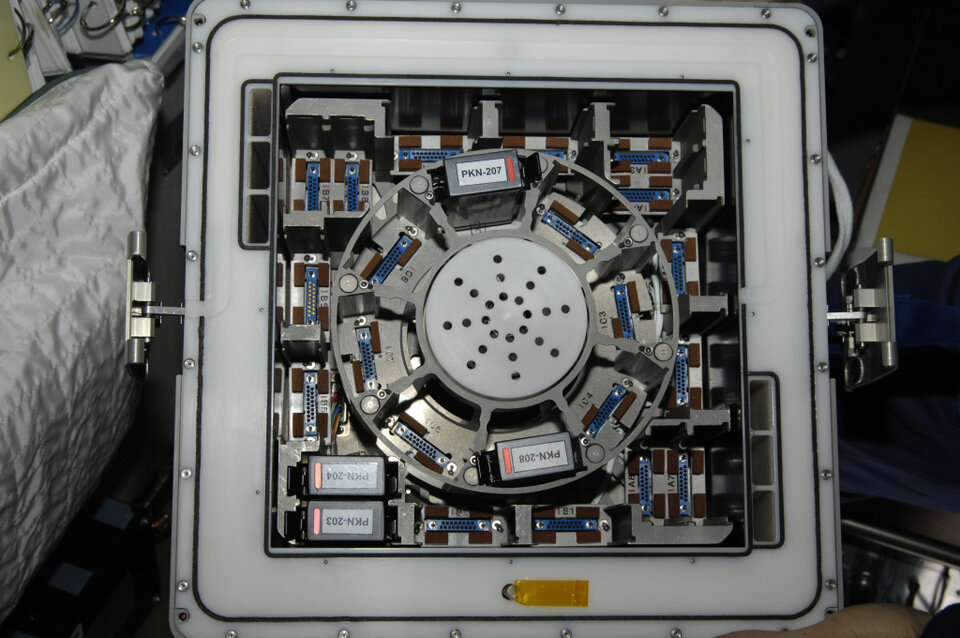
KUBIK-ROALD2
This experiment investigates gene expression of the proteins involved in the metabolic control of the neurotransmitter Anandamide. Scientists want to find out the role of this lipid in the regulation of immune processes and in the cell cycle under microgravity conditions.
Fluid Science

GEOFLOW-2
Geoflow-2 investigates the flow of an incompressible viscous fluid held between two concentric spheres rotating around a common axis as a representation of a planet. This is of importance for astrophysical and geophysical problems such as global scale flow in the atmosphere, the oceans, and in the liquid nucleus of planets. This study follows on from the first Geoflow experiment with new scientific objectives and a different experiment configuration.
MSG-SODI/COLLOID 2
Colloid 2 continues the Colloid experiment with the specific goal of observing nucleation and the early stages of aggregation in colloidal solutions. The focus is on materials that have a special interest in photonics, with emphasis on photonic crystals, which possess appealing properties and make them promising candidates for new types of optical components.
Materials Science

CETSOL-MICAST-SETA
These experiments examine different growth patterns and evolution of microstructures during crystallisation of metallic alloys in microgravity. The experimental results, together with numerical simulations, will be used to optimise industrial casting processes.
Radiation Research
TRITEL
One of the many risks of long-duration spaceflight is the exposure to cosmic radiation, which has great importance particularly during solar flares and higher solar activity. TriTel will undertake a 3D characterisation of the radiation environment in the Columbus module and will help estimate the absorbed dose and equivalent dose burden on ISS crewmembers.
DOSIS-3D
This experiment carries out three-dimensional monitoring of the radiation environment in all segments of the ISS using various active and passive radiation detectors to unveil the actual nature and distribution of the radiation field inside the Space Station.
ALTEA-SHIELD
Interactions between radiation in space and brain functions are among the major concerns when programming long permanence in space. The light flashes observed in space are an example of such interactions, created when ionising particles pass through the eye. This third part of the experiment will test different shielding materials for their effectiveness against radiation.
Solar Physics
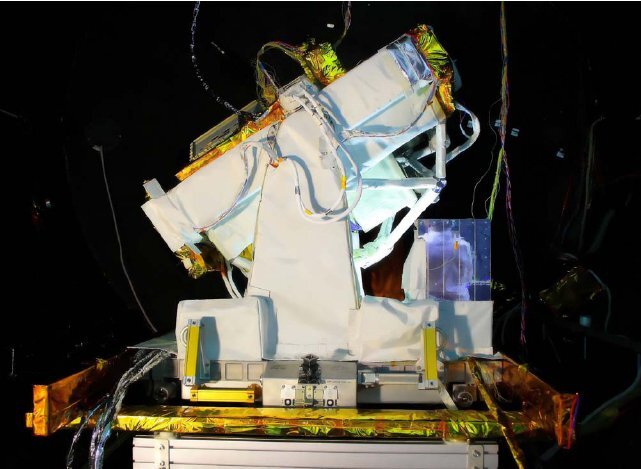
SOLAR
The SOLAR payload facility, located outside on the Columbus laboratory, studies the Sun’s electromagnetic radiation with unprecedented accuracy across most of its spectral range. The data acquired provides valuable contribution to long-term evaluation of the total solar irradiance. It also helps scientists in improving climate models and sharpening future weather forecasts. Such data can feed into the future design of satellites to prolong their life in orbit and to better tolerate the radiation effects.
Technology

VESSEL ID SYSTEM
Using Columbus as a test platform, this ESA satellite receiver brings worldwide sea traffic tracking within reach. Since its installation on ISS, this experimental ship detector has been pinpointing more than 300 000 vessels every day. The system helps to demonstrate the space-based capability for identifying ships on open seas within the field of view of the International Space Station.
METERON
The International Space Station is currently the most realistic environment that resembles a future human exploration mission. Meteron is a technology experiment and architecture aiming to validate future human-robotic operations from space using the ISS. The experiment will validate technologies and carry out future mission simulations with real time mission operations and communications including communications delays.
ERB-2
The Erasmus Recording Binocular 2 is a high-definition 3D video camera available on the ISS for recording and live streaming, thus providing a new way to run interactive video-conferences from the orbital outpost. ERB-2 takes advantage of high-definition optics and advanced electronics to provide a vastly improved 3D video effect for mapping the Station.
NIGHTPOD
A 2-direction ‘nodding’ mechanism was positioned in the Station’s Cupola to support a camera in taking high-definition pictures of a particular point on Earth. This payload is also used for education purposes in order to teach children and students about Earth observation using the ISS.
Experiments with ISS partners

His bones, the microorganisms living in his skin and even his feelings contributed not only to understand the effects and risks of human spaceflight, but will also help to benefit life on Earth. During André’s stay in space, weightless crystals were grown, a robotic crewmate tested its systems and the impact of microgravity on cucumber seeds was tested.
- Human Research
- – Pro-K. Dietary intakes to predict and protect against changes in bone metabolism during and after spaceflight.
- – Reaction self test. Psychomotor vigilance test.
- – Integrated Cardiovascular. Cardiac atrophy and diastolic dysfunction during and after long duration spaceflight.
- – Integrated Immune. Validation of procedures for monitoring crewmember immune function.
- – Repository. Biological specimens provide a means for investigating the physiological responses to spaceflight.
- – Kinematics-T2. Biomechanical analysis of treadmill exercise on the ISS.
- – Biomedical analysis of human hair exposed to a long-term spaceflight (HAIR).
- – Mycological evaluation of crew member exposure to ISS ambient air (MYCO).
- – VO2 Max. Evaluation of maximal oxygen uptake and estimates before, during and after long duration missions.
- Fluid Physics, Materials and Combustion Science
- – Protein Crystal Growth (PCG). Growth of crystals by the counter-diffusion technique.
- – Marangoni experiment (MEIS). Surface tension driven flow.
- Technology Demonstrations
- – Robonaut. An on-orbit robotics capability within the Space Station.
- – Photosynth. Three-dimensional modelling of the ISS.
- – Super sensitive HDTV system checkout and video downlink (SS-HDTV).
- Radiation Dosimetry
- – Altea Dosi. Measures of cosmic radiation in the US Destiny laboratory.
- – Area Passive Dosimeter for Lifescience experiments in Space (Area PADLES). Survey of the radiation environment on board the Japanese Kibo laboratory.
- Biology
- – Dynamism of auxin efflux facilitators (CsPINs). Studying the gravity response of dry cucumber seeds.
- – Microbe. The experiment tries to identify types of microbes in the Japanese Kibo laboratory by long-term sample collections.
- Education and Earth Observation
- – Crew Earth Observations (CEO). Photography sessions over designated areas of Earth.
- – ISS knowledge acquired by middle schools (EarthKam). Remote imaging and terrestrial research for students.
- – ISS Ham radio. Amateur radio on the Space Station.
- – Education Payload Operations Demonstrations (EPO Demos). Educational videos recorded by astronauts on board the Space Station.
- – The Space Voice of the Open Mind (Chuon). Investigating the effects of space environment on feelings, opinions and minds.















 Germany
Germany
 Austria
Austria
 Belgium
Belgium
 Denmark
Denmark
 Spain
Spain
 Estonia
Estonia
 Finland
Finland
 France
France
 Greece
Greece
 Hungary
Hungary
 Ireland
Ireland
 Italy
Italy
 Luxembourg
Luxembourg
 Norway
Norway
 The Netherlands
The Netherlands
 Poland
Poland
 Portugal
Portugal
 Czechia
Czechia
 Romania
Romania
 United Kingdom
United Kingdom
 Slovenia
Slovenia
 Sweden
Sweden
 Switzerland
Switzerland

























